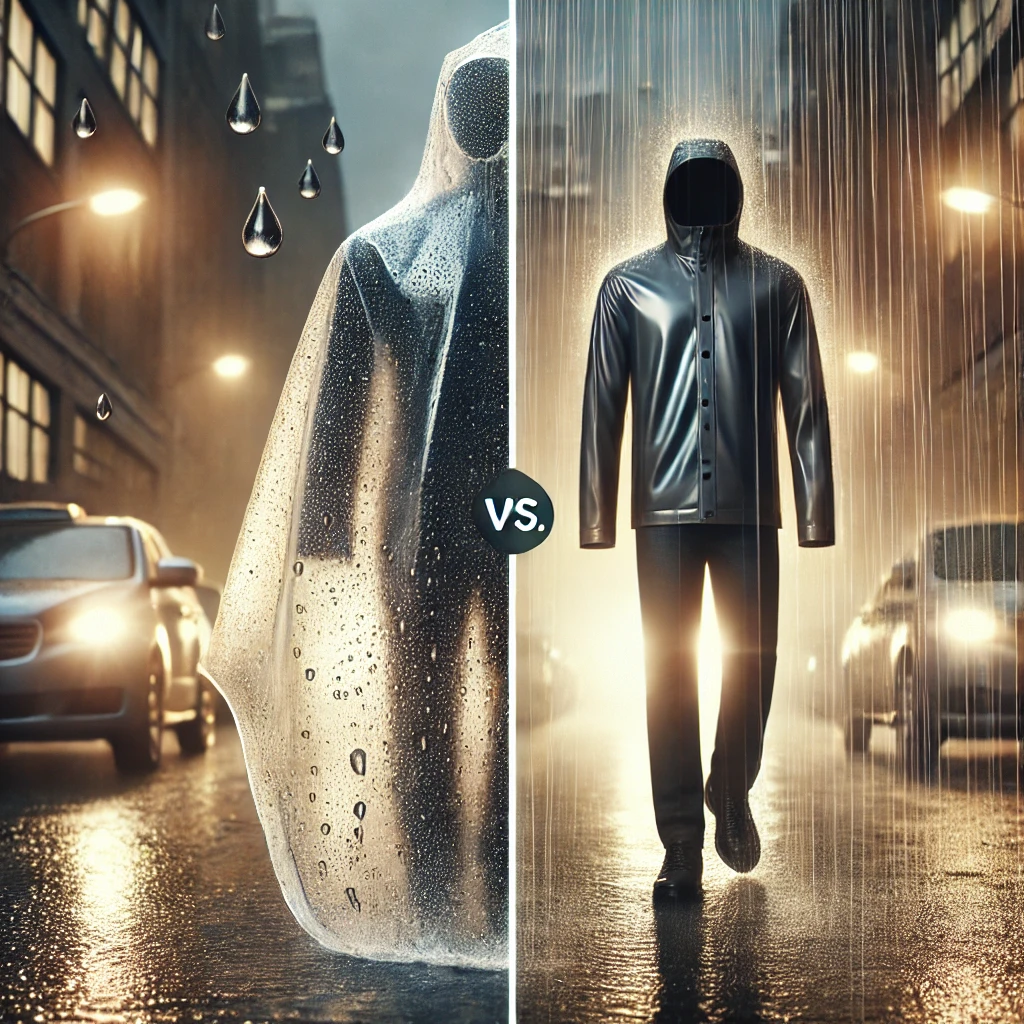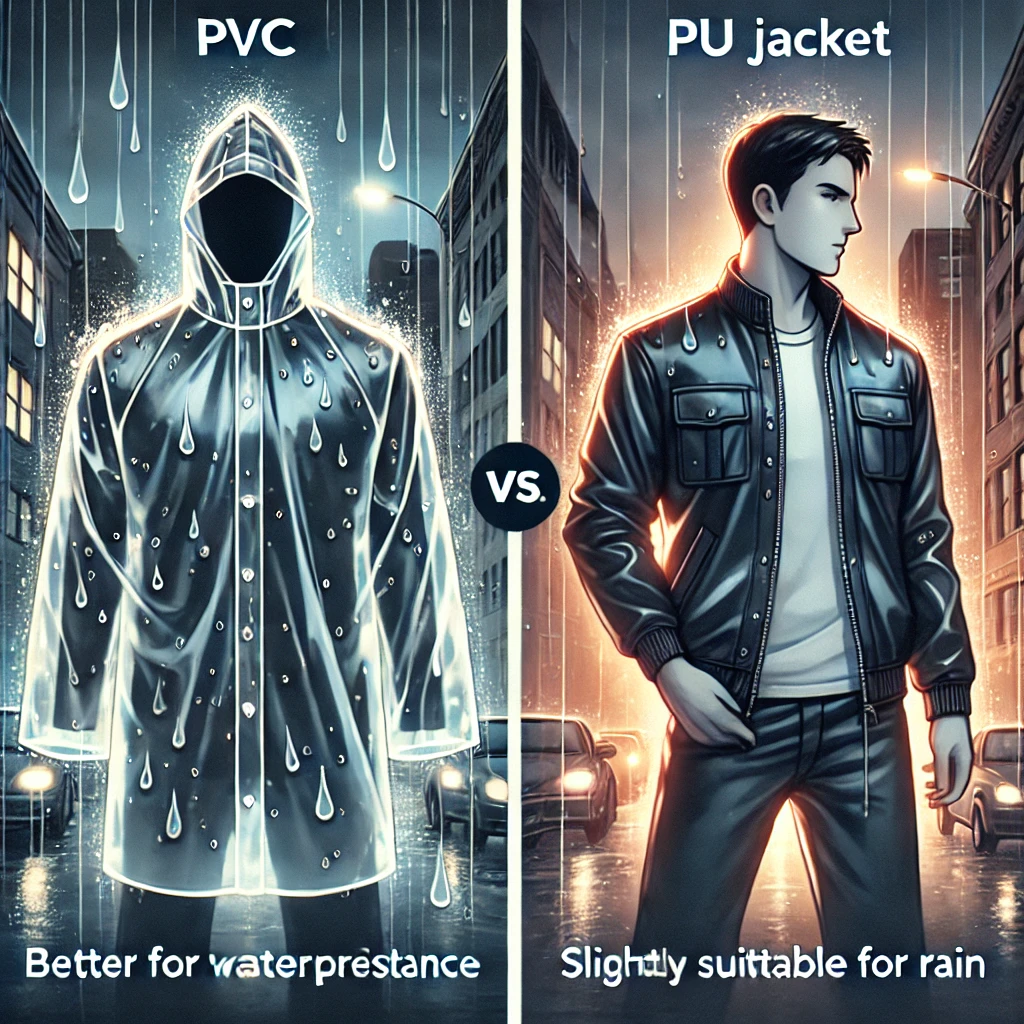Let’s face it – choosing between a isa pvc raincoat bettern than a pu raincoat can feel confusing. Both materials seem great, but which one’s actually better? You’re probably here because you’re wondering if a PVC raincoat truly holds up against a PU one. Let’s tackle this question directly.
When you think about staying dry, durable protection, and comfort, both isa pvc raincoat bettern than a pu raincoats have their pros and cons. But understanding what each material brings to the table can make choosing easier.
What Exactly Are isa pvc raincoat bettern than a pu?
PVC (Polyvinyl Chloride) is a plastic that’s widely used because it’s strong, waterproof, and lasts a long time. It’s often seen in raincoats, tents, and even plumbing materials.
On the other hand, isa pvc raincoat bettern than a pu is a flexible plastic, known for being lightweight and breathable. It’s often used in clothing for that “leather-like” look and is generally considered to be softer and more comfortable.
Each material has unique strengths, so let’s dive into where they shine – and where they don’t.

Why Some People Swear by isa pvc raincoat bettern than a pu
PVC raincoats are known for their durability and heavy-duty waterproofing. Here’s why many people choose them:
- Waterproof Like No Other: PVC is highly waterproof, which means it handles heavy rain without letting a drop through. If staying dry is your top priority, PVC is a solid bet.
- Long-lasting Material: PVC can take a beating. It’s resistant to tears and holds up well even with frequent wear. If you want a raincoat that’s built to last, isa pvc raincoat bettern than a pu is a great choice.
- Easy to Clean: Got dirt or mud on your raincoat? PVC is super easy to wipe down. Just a bit of soap and water, and it’s as good as new.
But let’s not ignore the other side. PVC is strong, but it’s not perfect.
The Downside of isa pvc raincoat bettern than a pu
While PVC has its perks, there are some downsides to consider:
- Stiff and Less Flexible: isa pvc raincoat bettern than a pu can feel heavy and rigid, especially in colder temperatures. It doesn’t have the softness of PU, which may make it feel bulky for some.
- Not Very Breathable: PVC isn’t breathable. In warmer weather, a PVC raincoat might trap heat, making you feel sweaty and uncomfortable.
- Environmental Concerns: PVC is a type of plastic that doesn’t break down easily, so it’s not the most eco-friendly choice.
Why Others Prefer PU Raincoats
PU raincoats bring something different to the table. Here’s why PU has its own loyal fans:
- Lightweight and Comfortable: isa pvc raincoat bettern than a pu raincoats are generally lighter than PVC, making them easier to move in and comfortable for extended wear.
- Breathable: PU raincoats allow for better air circulation, which means you won’t feel as sweaty as you might in PVC. This can be a lifesaver during warmer weather.
- Soft and Flexible: PU offers a softer, more flexible feel, which many find more comfortable, especially if you’re wearing it all day.
However, PU has its own quirks too.
The Downside of isa pvc raincoat bettern than a pu
While PU raincoats have plenty of benefits, they also have their limitations:
- Less Durable than PVC: PU is not as tough as PVC. It can wear out faster and might need replacing sooner.
- Lower Waterproofing: Although PU is water-resistant, it doesn’t stand up to heavy rain as well as PVC does. In a downpour, you might find yourself getting a bit wet.
- Can Lose Shape Over Time: Some PU coats can stretch or lose their shape, which can affect the fit after long use.
So, Is a PVC Raincoat Really Better Than a PU One?
The answer depends on what you need most from your raincoat.
- Choose PVC if you’re looking for durability, heavy-duty waterproofing, and a coat that will last. It’s great for harsh weather, long hikes, or anyone who needs maximum rain protection.
- Choose PU if comfort, flexibility, and breathability are more important to you. A PU raincoat can feel more like a regular jacket, perfect for mild weather and everyday wear.
In short, if you want rugged protection, PVC might be your best bet. But if you need a raincoat that’s easy to wear and breathable, PU could be the way to go.
FAQs: Answering Common Questions on isa pvc raincoat bettern than a pu
Q1: Which is better for heavy rain – isa pvc raincoat bettern than a pu?
A: PVC raincoats are better suited for heavy rain. PVC offers more waterproofing than PU, making it a stronger choice when you need serious rain protection.
Q2: Are PU raincoats environmentally friendly?
A: While PU is considered more eco-friendly than PVC, it’s still a synthetic material. Some brands do produce recycled PU raincoats, so check labels if this is important to you.
Q3: Do PVC raincoats smell?
A: PVC coats can have a strong, plastic-like smell at first, but it often fades over time. Some people find it off-putting, so if you’re sensitive to odors, PU might be a better option.

Q4: Are there any alternatives to isa pvc raincoat bettern than a pu raincoats?
A: Yes, there are raincoats made from recycled materials and other sustainable fabrics, but they might not offer the same waterproofing as isa pvc raincoat bettern than a pu.
Q5: How can I clean my PVC or PU raincoat?
A: Both types can be cleaned with mild soap and water. Avoid harsh chemicals as they can damage the material.
PVC vs. PU Raincoat: What’s the Final Call?
If you’re making a choice between a isa pvc raincoat bettern than a pu, think about your main priorities. PVC might be the right choice for you if you need all-out rain protection and durability. But if you value comfort, breathability, and a bit of flexibility, PU can offer a better experience.
Remember, no material is “perfect.” Each has strengths and weaknesses, and only you can decide what fits best with your needs.
Whether you go for a PVC raincoat or a PU one, knowing what each material offers will help you pick the right raincoat for you. So next time you’re out in the rain, you’ll be prepared – and maybe even dry.